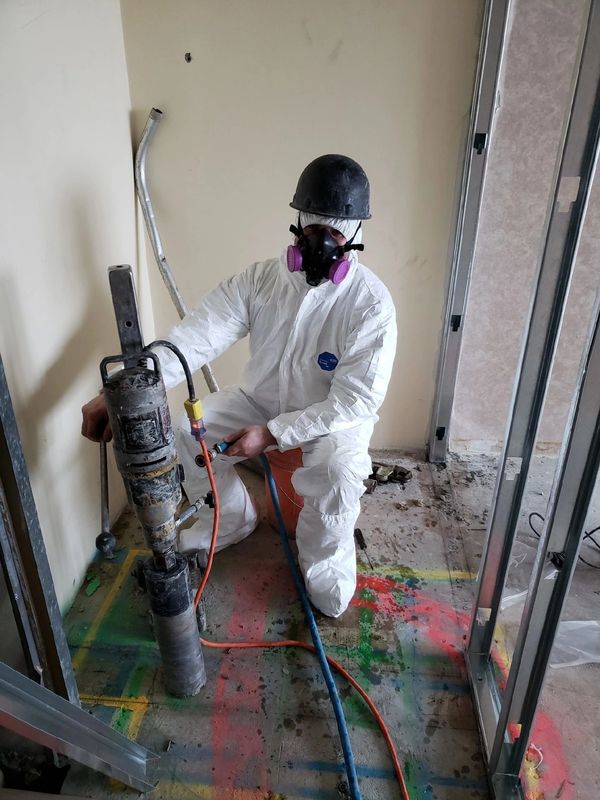Improve Construction Security with Professional Concrete Scanning
Improve Construction Security with Professional Concrete Scanning
Blog Article
Introduce the Transformative Power of Concrete Scanning in Making The Most Of Performance and Safety And Security
Concrete scanning has emerged as a critical device in the building and construction industry, providing unmatched advantages in boosting project effectiveness and making certain safety and security standards. The transformative power of concrete scanning lies in its ability to give real-time data and detailed insights, reinventing exactly how jobs are prepared and carried out.
Significance of Concrete Scanning
Ensuring the architectural integrity and safety and security of building tasks begins with the vital step of carrying out comprehensive concrete scanning. Concrete scanning is a non-destructive approach used to discover and map subsurface elements within concrete structures.
Furthermore, concrete scanning aids in optimizing job timelines and budget plan by staying clear of unforeseen expenses and hold-ups that may emerge due to unforeseen blockages within the concrete. Eventually, spending in comprehensive concrete scanning is a positive strategy that improves both effectiveness and safety and security in building and construction tasks.
Exactly How Concrete Scanning Works
Concrete scanning operates as an important tool in construction jobs by employing sophisticated technologies to identify and map subsurface aspects without triggering structural damages. Ground Permeating Radar (GPR) and Electromagnetic Induction (EMI) are 2 primary methods used in concrete scanning.
Throughout the scanning process, the information collected is examined in real-time, enabling prompt identification of possible risks or barriers below the surface area. This info help in decision-making, guaranteeing that building and construction activities proceed safely and successfully. Furthermore, 3D imaging software program can be utilized to create topographic maps of the subsurface elements, additionally boosting project preparation and execution. By utilizing these innovative technologies, concrete scanning substantially reduces the danger of pricey problems and injuries on building websites.
Benefits of Concrete Scanning
One of the key advantages of concrete scanning is the ability to discover and situate embedded items such as rebar, post-tension cords, and conduits precisely. Concrete scanning helps in preparation and designing more effectively, as it supplies specific details about the location and depth of structural parts.

Study: Concrete Scanning Success

In Website another situation, a construction business used 3D concrete scanning to analyze the condition of aging concrete structures in a historical building. The in-depth scans given valuable insights into the degree of deterioration and helped prioritize upkeep initiatives effectively. By proactively attending to locations of concern determined with scanning, the firm had the ability to prolong the life-span of the structure and guarantee passenger safety and security.
These instance research studies underscore the transformative power of concrete scanning in improving effectiveness, accuracy, and safety in building jobs.
Executing Concrete Scanning in Projects
Executing sophisticated scanning innovations during building jobs has become increasingly vital for improving precision and security. By integrating concrete scanning right into job planning and execution, building teams can identify potential hazards, such as rebar or post-tension cables, hidden within concrete frameworks. This aggressive strategy decreases the danger of mishaps, hold-ups, and expensive rework, eventually leading to extra reliable job timelines and spending plans.
To execute concrete scanning effectively, task supervisors ought to collaborate carefully with knowledgeable scanning professionals to identify the most ideal scanning methods for the certain project needs. Involving scanning experts from the onset of a job enables the group to produce comprehensive scanning strategies that deal with key areas of problem and make sure extensive data collection.
In addition, integrating concrete scanning into normal job operations can enhance decision-making processes, as real-time scan information gives instant understandings into the condition of concrete structures - Concrete Scanning. This data-driven strategy facilitates notified analytic and allows groups to make adjustments immediately, promoting a culture of performance and safety throughout the job lifecycle

Final Thought
In conclusion, concrete scanning plays a vital role in improving performance and safety in building tasks. By utilizing sophisticated innovation to detect and map out underlying frameworks within concrete, this process helps to stop pricey blunders, ensure structural integrity, and lessen risks on website. With the capability to uncover hidden components and provide accurate data, concrete scanning shows to be a useful device for maximizing job end results and taking full advantage of general success.
Concrete scanning is a non-destructive technique utilized to find and map subsurface aspects within concrete frameworks. In addition, concrete scanning assists in enhancing task timelines and spending plan by staying clear of unexpected costs and delays that may arise due to unanticipated blockages within the concrete. One significant case study involves a large-scale restoration task where concrete scanning played an important function in making certain project success.In an additional instance, a building and construction business used 3D concrete scanning to examine the condition of aging concrete structures in a historical building. By integrating concrete scanning right into task preparation and implementation, building teams can determine potential hazards, such as rebar or post-tension cable televisions, hidden within concrete structures.
Report this page